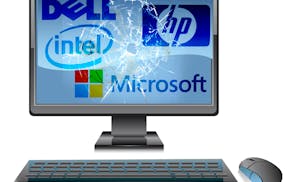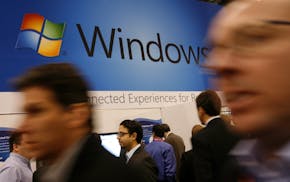Q: My four-year-old Windows 7 PC isn't able to update Windows automatically, and I understand that I can't upgrade to Windows 10 unless Windows 7 is updated first. My problem is that the Windows troubleshooting software says the operating system has never been updated, and when I try to update it manually I get the message "Windows Update error 80070422." What can I do?
Glenn Ducote, Baton Rouge, La.
A: If the required predecessor Windows 7 updates haven't been installed on your PC, follow Microsoft's directions for how to turn on updates (see tinyurl.com/kbl3bcm.) If that doesn't work, download the latest all-inclusive Windows 7 update, called "Windows 7 SP1," as described below. Your PC should then be Windows 10-ready for the July 29 introduction of the new operating system.
Your situation highlights two issues facing PC owners who want to upgrade to Windows 10: What must they do to make their PCs Windows 10-ready, and is the upgrade a good idea?
Microsoft's software and hardware requirements for upgrading can be found at tinyurl.com/pql9fs2. On that page, Windows 7 users will find a link to download the all-inclusive update, Windows 7 SP1. On the same page, Windows 8.1 users will find a link to "Windows 8.1 Update." (Microsoft assumes any Windows 8 user interested in Windows 10 will have upgraded to Windows 8.1.)
The site also includes PC hardware requirements for running Windows 10 on an older PC. They include a minimum processor chip speed (1 gigahertz), minimum RAM, or random-access memory (1 gigabyte for 32-bit PCs, or 2 gigabytes for 64-bit PCs) and the amount of available hard disk space needed (16 gigabytes for 32-bit PCs, 20 gigabytes for 64-bit PCs). The 32-bit and 64-bit designations represent different types of computer processor chips.
If you don't know these details about your PC, here's how to find out: To determine your PC's processor speed and type, and its RAM capacity, go to Control Panel and choose System. To find out how much hard disk space you have available, look in Windows Explorer (Windows 7) or File Explorer (Windows 8.1.) Right click the C drive and choose properties.
It is worth noting that Microsoft's minimum PC requirements for running a new version of Windows often err on the side of being too minimal. PCs that barely meet the requirements have, in the past, run new versions of Windows rather slowly.
On the question of whether to upgrade, you should also know that Windows 10 has some quirks. One is obvious: You won't be able to use the touch-screen features of Windows 10 unless your PC already has a touch screen. But there are also non-obvious issues: As it is being installed, Windows 10 will ask to remove any software from your PC with which it isn't compatible (you'll have the option to say no). In addition, installing Windows 10 will remove Windows Media Center from your PC. To watch DVDs on your PC, you'll have to download new DVD software.
E-mail tech questions to steve.j.alexander@gmail.com or write to Tech Q&A, 650 3rd Av. S., Suite 1300, Minneapolis, MN 55488. Include name, city and telephone number.

Alexander: A beeping computer is telling you what's gone wrong inside

Alexander: How to stop deleted iPhone e-mails from coming back

Alexander: Refurbished PCs may need a BIOS update to use new components

Alexander: Windows 11 not always to blame for browser or e-mail problems


